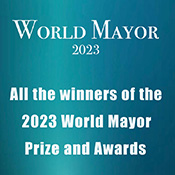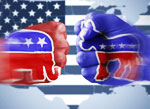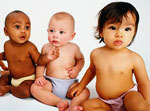
 |
Research from cities in the USA
|
||||||||||||||||||||||||||||||||||||||||||||||||||||||||||||||||||||||||||||||||||||||||||||||||||||||||||||||||||||||||||||||||||||||||||||||||||||||||||||||||||||||||||||||||||||||||||||||||||||||||||||||||||||||||||||||||||||||||||||||||||||||||||||||||||||||||||||||||||||||||||||||||||||||||||||||||||||||||||||||||||||||||||||||||||||||||||||||||||||||||||||||||||||||||||||||||||||||||||||||||||||||||||||||||||||||||||||||||||||||||||||||||||||||||||||||||||||||||||||
FRONT PAGE About us   CITIES RESEARCH • Mass shootings USA • Research worldwide • Sports Cities Index 2015 • Research from the US • Research from North America • Research from Latin America • Research from Europe • Research from Asia • Research from Africa |
 American cities with tech American cities with techand energy industries performed best in 2014 Research 2015: American cities whose economies are strongly linked to technology and energy have performed best in the 2015 Milken report, which measures job and wage growth as well as the concentration of high-technology industries. Even though San Francisco removed Austin from the nation’s number-one spot, Texas still had five of its cities ranked among the top 10. No East-Coast cities featured among the top 25. The authors of the ‘Best-Performing Cities’ report said that technology and shale energy were the biggest factor behind America’s booming cities. Technology centres captured 13 of the top 25, with metros containing both creative- and scientific-based industries performing best. San Francisco achieved the top rank for the first time in the 15-year history of the index. Propelling the gains: the city's number-one finish in wage growth over both the past five-year and one-year periods. "Young, technology-skilled workers are flocking to San Francisco, driving up wages and driving down unemployment in these sectors below two per cent," said the report. Texas claimed five of the top 10 positions among large metropolitan areas. A special Texas blend of technology, energy strength, and a favourable business climate boosted Texan metro economies. East-Coast and ‘Rust-Belt’ cities fared badly in the Milken Institute report. New York City fell from 34th spot in 2013 to 62nd 12 months later, while Washington DC dropped 39 places to 84th place. The best placed East-Coast metro area was Cambridge, MA, ranked 34th, down from 23rd in 2013, while Boston improved slightly from 46th to 44th place. Detroit, which late last year emerged from bankruptcy was ranked 193rd. Looking forward to the 2015 ranking, many economist predict that, with oil prices falling to below US$50 a barrel, many cities which rely heavily on the energy sectors for job and revenue growth, will stagnate or see their fortunes reversed. It is widely believed that the exploration of shale oil and gas needs an oil price of above $70 to be profitable. The three best-performing smaller cities were Fargo (ND), Columbus (IN) and Victoria (TX). Economic ranking of the most prominent US cities
 US police forces US police forcesfind it hard to recruit from ethnic minorities Research 2015: Since the fatal shooting of an unarmed black teenager by a white police officer in Ferguson, Missouri, last August, there have been renewed calls from across the US to recruit more officers from ethnic minorities. Commentators argue that the racial mix of a police force should reflect the make-up of the community it serves. Recent research has shown that white Americans are overrepresented in 68 out of the 75 largest police forces in the US*. The overrepresentation is particularly high in Jersey City, Newark (NJ), Sacramento (CA) as well as in the NY cities of Rochester and Buffalo. Brownsville (TX) and Los Angeles have police forces whose racial and ethnic mix most reflects that of their cities’ populations. Most of America’s police forces are keen to diversify but find it harder and harder to recruit young blacks. While the percentage of police officers from racial or ethnic minorities has increased from 17 per cent in the 1980s to 25 per cent now, the trend seems to be stalling. Many police chiefs say that despite their best efforts, young black people were just not interested in joining the police. Cedric Alexander, the president of the National Organization of Black Law Enforcement Executives, said even though many police forces were predominantly recruiting in black schools they just can’t get more black officers. He explained that 40 years ago, when he joined the police, young blacks took up police jobs to make things better from within. “Today young bright people have far better opportunities in the private sector,” Alexander added. US cities where whites are in a minority but are overrepresented in the police
 The vast majority The vast majorityof America’s largest cities are liberal Research 2014: The vast majority of large American cities are fundamentally liberal-leaning. New research conducted by the Massachusetts Institute of Technology (MIT) and the University of California (UCLA) found that out 51 cities with populations of more than 250,000 only eleven could be described as conservative. Two cities are neutral while the rest are liberal. The researchers named Meza, Arizona, as the country’s most conservative city, while, unsurprisingly, San Francisco emerged as America’s most liberal city. Additional research by City Mayors also showed that while four of the 15 most conservative cities in the US had Democrat mayors none of the 15 most liberal ones were led by Republicans. The MIT/UCLA research examined the average policy preferences of residents in the 51 US cities with populations exceeding 250,000. The researchers then compared them to the policies of those cities to see if political leanings were reflected in tax burdens and other city operations. "The policies enacted by cities across a range of policy areas correspond with the liberal-conservative positions of their citizens on national policy issues," the authors wrote. Mesa, a Phoenix-area suburb with a population of about 468,000, easily grabbed the top spot for most conservative city in the country. Oklahoma City and Virginia Beach followed as the next most right-leaning. The research confirmed the status of San Francisco, Washington DC and Seattle as cities as trail-blazing liberal cities. There has been some criticism of the study’s methodology. Some analysts commented that the research did not urban structure into account. Many of the most conservative cities on this list (e.g. Jacksonville, Las Vegas, Omaha, Oklahoma City, Colorado Springs) are in traditionally mono-centric urban areas, but in the middle of the 20th century annexed large portions of what would be suburban municipalities in other metro areas. Others are purely suburban municipalities (e.g. Mesa, Aurora, Anaheim) that just happen to occupy more land than suburbs usually do. “What would be more interesting is to look at the primary core cities (as defined by the Census Bureau) of, say, the largest 50 or 100 metropolitan areas. Oklahoma City would probably win out.” Americas most conservative cities and their mayors
America’s most liberal cities and their mayors
 Less than 20 per cent Less than 20 per centof America’s cities are led by women mayors Research 2014: Less than 20 per cent of America’s city mayors are women. Following mayoral elections across the US last November, data shows that of 1,351 cities with more than 30,000 inhabitants, only 249, or 18.4 per cent, were led by women. The share of women mayors among very large US cities is even lower. Houston’s Annise Parker is the only woman governing a city with more than one million people. Twenty of America’s 150 largest cities have women at the top (13.3%). Nine of them belong to the Democratic Party, seven are Republicans, while four mayors are non-aligned. The longest-serving mayor from the group of top-20 female mayors is Laurene Weste from Santa Clarita, California. Mayors, who assumed office this year, include Betsy Hodges (Minneapolis) and Lovely Warren (Rochester). In 2010, Susan Carroll and Kira Sanbonmatsu presented a paper to Midwest Science Association, which investigates the backgrounds of women mayors and their decision to seek municipal office for the first time. The authors found that while it was generally assumed that women fare well in local politics, the number of women mayors in larger cities had not increased over time. Women mayors among America’s top 150 cities
 White Americans are White Americans area minority in most of the largest US cities Research 2014: While ethnically America is still predominantly White (2), in many of the country’s largest cities people of European ancestry are in a minority. Overall, White Americans make up 63.7 per cent of the US population, Hispanic or Latino Americans account for 16.4 per cent with African Americans on 12.6 per cent. But in 18 out of the 25 largest US cities, White Americans comprise less than half of the population. The cities with largest African American populations include Detroit (83%), Memphis (63%) and Washington DC (51%). El Paso has the largest share of Hispanic Americans (81%), while San Francisco is home to more Asian Americans (33%) than any other large US city. In Detroit, Memphis and Washington DC African Americans form the majority, while Hispanic Americans account for more than 50 per cent of the populations in El Paso and San Antonio - in Los Angeles, 48.5 per cent of people describe themselves as Latino. In San Francisco and San Jose, both in California, Americans of Asian origin represent almost one third of the total population. Ethnic make-up of America’s largest cities
(2) 2010 data: White Americans have ethnic origins in Europe but can include people from the Middle East and North Africa (3) 20210 data: Black or African American have ethnic origins in sub-Sahara Africa. (4) 2010 data: Hispanic or Latino Americans have ethnic origins in the Latin-speaking countries of Latin America, Portugal and Spain. (5) 2010 data: Asian Americans have ethnic origins in the Far East, Southeast Asia and South Asia. Follow @City_Mayors |